#Canadian Pacific Railway
Text


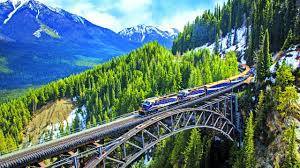
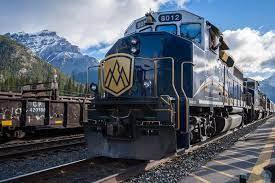
For a lifetime of memories, cross the Rocky Mountains on the CPR
#Rocky Mountains#Canadian Pacific Railway#Canadian Rockies#luxury train#dome cars#scenery#landscapes#CP Rail#CPR#Rocky Mountaineer#train travel#Trans-Canada#Alberta & BC
19 notes
·
View notes
Photo

‘Travel Canadian Pacific Across Canada!’
Canadian Pacific Railway travel poster (c. 1940). Artwork by Peter Ewart.
#1940s#vintage poster#vintage travel poster#canada#Peter Ewart#canadian pacific#canadian pacific railway#trains#train#locomotive#travel#tourism#holiday
368 notes
·
View notes
Text
Canadian Pacific Railway is leading cleanup and track repairs following a freight train derailment and fire in Maine, officials said Sunday.
Three rail workers were treated and released from hospital after three locomotive engines and six train cars carrying lumber and electrical wiring went off the track on Saturday in Somerset County, officials said.
Canadian Pacific is leading cleanup, salvage and repair, working with state agencies and local fire and rescue, said Jim Britt of the Maine Department of Agriculture, Conservation and Forestry. Workers were removing derailed locomotives and rail cars, cleaning up crash debris and repairing the rail line. It was unclear how long the process would take.
Some hazardous materials were on the train, officials said, but first responders determined they were not at risk of leaking or catching fire. There was no threat to public safety, officials said. [...]
Continue Reading.
Tagging: @politicsofcanada
88 notes
·
View notes
Text
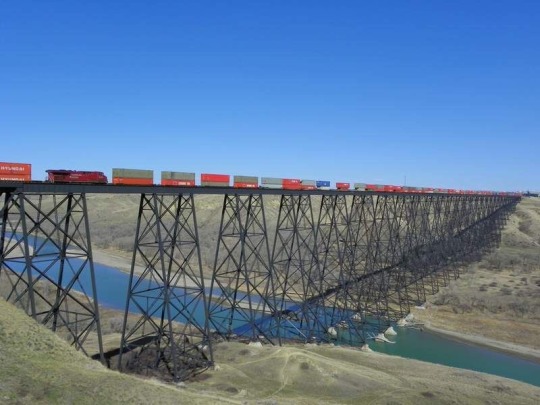
High Level Bridge (Lethbridge, Alberta)
60 notes
·
View notes
Text
Big Business can't stop its illegal, fantastically lucrative gossiping
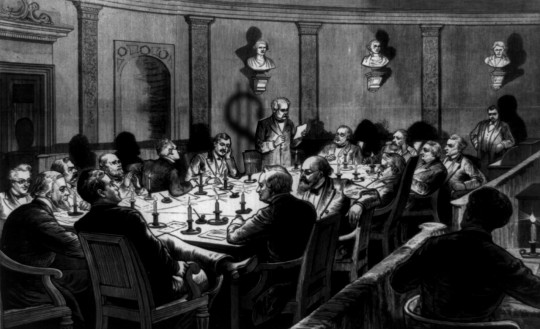
Seven years ago, I called Leonard Cohen’s Everybody Knows “the perfect anthem for our times.”
Everybody knows the war is over
Everybody knows the good guys lost
Everybody knows the fight was fixed
The poor stay poor, the rich get rich
That’s how it goes
Everybody knows
https://memex.craphound.com/2016/11/11/leonard-cohen-wrote-the-perfect-anthem-for-our-times/
If you’d like an essay-formatted version of this post to read or share, here’s a link to it on pluralistic.net, my surveillance-free, ad-free, tracker-free blog:
https://pluralistic.net/2023/03/16/compulsive-cheaters/#rigged
That was just after Cohen died, and while the world seems to want to settle on Hallelujah as his totemic song, Everybody Knows keeps inserting itself into the discourse, in the most toxic, hope-draining way possible. Whenever some awful scandal involving the great and the good breaches, we’re told that “everybody knew” already, so let’s move on.
This current has been running through our society for decades now. Remember when the Snowden leaks hit and a yawning chorus of nihilists told us that they knew already and so should anyone else with the smallest iota of sophistication? Back then Jay Rosen coined a rejoinder to this counsel of despair: “Don’t savvy me”:
https://twitter.com/jayrosen_nyu/status/344825874362810369
Everybody knows. It’s what we heard after the Panama Papers. Swissleaks. Luxleaks. The Paradise Papers. Everybody knows! It’s what the nothing-to-see-here crowd said about Propublica’s explosive IRSLeaks, back in 2021:
https://pluralistic.net/2021/06/15/guillotines-and-taxes/#carried-interest
The leaks revealed the tax-dodges of the richest and most powerful people in America, which were jaw-dropping in their audacity and shamelessness. Sure, maybe you suspected that the 400 richest people in America paid less tax than you — but did you really guess that the means by which they did this was through taking massive deductions on their elite hobbies?
https://pluralistic.net/2022/04/13/taxes-are-for-the-little-people/#leona-helmsley-2022
Maybe “everybody knows” that the game is rigged, but did you know how? Like, did you know that REITs — a tax shelter for mom-and-pop investors who buy an income property for their retirement — have become a primary vehicle for gutting unions at hotels, slashing wages and imposing brutal, dangerous working conditions?
https://pluralistic.net/2022/03/01/reit-modernization-act/#reit-makes-might
The leaks are cumulative. By combining data from one leak with another, we can build out a far more detailed picture of the conspiracy — and it is a conspiracy — among the utlrawealthy and their Renfields in the law, real-estate and accounting trades to duck their responsibilities and mound ever-more treasure on their hoards.
Take the Jersey Offshore leaks (2020), comprising the internal memos of La Hougue, a fantastically crooked firm of fixers on the Isle of Jersey, one of the lawless tax-crime jurisdictions that the UK pretends it has no control over. La Hougue has a playbook, 11 tactics for lying about your taxes. The remarkable thing about these 11 tactics is how flimsy they are, how easy it is to penetrate their lies. When Parliament says it can’t possibly do anything about the criminal havens in the Channel, remember the Jersey Offshore leaks and remind yourself that not even Parliament is that credulous. They know. Everybody knows:
https://pluralistic.net/2021/06/20/la-hougue/#complexity
Why do working people think the Democrats are just another party for the ultra-rich? Maybe it’s Pelosi’s relentless opposition to meaningful curbs on insider trading. Or maybe it’s the kinds of politicians that the Democratic Machine likes to rally behind — like Tali Farhadian Weinstein, who raised millions in 2021, in large-money donations from Democratic finance-sector donors in her bid to become the DA of Manhattan. Farhadian Weinstein and her husband have more than $100m in annual income, and yet, paid no federal tax in 2013, 2015 and 2017. In 2014, they paid $6,584:
https://pluralistic.net/2021/06/17/quis-custodiet-irs/#trumps-taxes
Propublica isn’t done with the IRS Files. Today, they published a long investigation into ultra-rich corporate executives who buy and sell their competitors’ stock for massive profits with suspiciously precise timing. The data comes from 1099-B filings, which brokerages file with the IRS with each trade, but which the IRS doesn’t share with the SEC:
https://www.propublica.org/article/secret-irs-files-trading-competitors-stock
Here are some examples:
Ohio billionaire August Troendle, CEO of Medpace, repeatedly bought and sold shares of $Syneos — his company’s archrival, timing the transactions with a management shakeup that dropped the stock by 16% in one day, and an SEC investigation that crushed Syneos’s stock by 25%. His precision timing made him at least $2.3m in profit.
Isaac Larian, CEO of Bratz-maker MGA, made $28m trading shares in Mattel, MGA’s nemesis and frequent litigant — during a period when Mattel stock crashed by 57% (!). Larian boasts that “I made a LOT more money shorting Mattel stock than they did running a $4.5 billion toy company.”
Larian’s trades also involved some very precise timing. Sometimes, he took positions just before his own company announced its upcoming products, and others positions immediately preceded major disclosures from Mattel. Larian’s subordinates told Propublica that he is “is a boss with an endless appetite for information about his company and its competitors, constantly grilling subordinates on minutiae about the industry.”
Larian couldn’t explain the timing of these trades. His lawyer told Propublica that it was “false and defamatory” to suggest that he “possessed material, nonpublic information that Larian knew was obtained in breach of a duty.”
Next up is Gerald Boelte, founder and chair of the massive oil company LLOG. LLOG partners with other companies for its oil drilling. Companies like Stone Energy. Boelte bought a huge position in Stone the day before the company’s 2015 earnings report, in which they revealed an increase their reserves’ value, pulling in a 65% one day profit. He’d never bought shares in Stone before.
Boetle told Propublica, “I do not and have never traded on any material, non-public information of competitors, business partners or others… Any implication that I was investing based upon advance knowledge is therefore clearly false.”
Jim Sankey is CEO of Invue. He bought $3.2m worth of shares in his rival Checkpoint, while checkpoint was in secret negotiations to be acquired by CCL Industries. Sankey was already thoroughly connected to Checkpoint, having sold a $150m product line to them in 2007. There’s no record that he’d ever traded Checkpoint before. He made $2.3m. Sankey says “he did not know Checkpoint was going to be acquired.” He says that his company was not approached by Checkpoint as a potential acquirer.
Barry Wish was a board member of Ocwen, a company he co-founded. After the Great Financial Crisis, Ocwen bid unsuccessfully to buy $215b worth of Bank of America mortgages. The winning bidder was Nationstar. Three weeks before Nationstar’s winning bid was announced, Wish bought $600k worth of Nationstar shares. After the bid was announced, he sold them for for a $157k profit.
Wish told Propublica that he never traded competitors’ stock: “No, not at all.” Propublica read him the details of the trade from his leaked 1099-B. He said “You might see it, but I don’t have any recollection” and hung up.
Steven Grossman is a cardboard heir — a nepobaby who inherited Southern Container Corp from his grandpa. After he sold the company to Rock-Tenn for $1b in 2013, he stayed on as a senior exec. Over the next 5 years, he traded large blocks of shares in Rock-Tenn’s competitors, companies like Temple-Inland, a company that he made a 37% profit on after its acquisition was announced in 2011, one week after Grossman started buying its shares.
Grossman falsely told Propublica, “I haven’t traded stock since then.” IRS records show that Grossman continued to trade. Grossman also told Propublica that he had no role with Rock-Tenn, despite being on their payroll for five years. When asked about his extremely lucky timing buying and selling Temple-Inland, he said “That was 10 years ago” and hung up.
As Propublica’s Robert Faturechi and Ellis Simani write, Securities regulations have their origins in the crash of 1929, and the subsequent collapse in confidence in markets and capitalism, the sense that the system was rigged for the wealthy and political insiders. That is a pretty good summation of sentiment today:
https://pluralistic.net/2023/03/15/mon-dieu-les-guillotines/#ceci-nes-pas-une-bailout
It’s not just that corporate executives are corrupt, it’s that they’re lavishly, shamelessly, endlessly, incorrigibly corrupt. Take Canadian Pacific and Kansas City Southern, the sixth- and seventh-largest Class I railroads in the USA, whose merger was just approved by the Surface Transportation Board.
There are plenty of good reasons for the STB to have blocked this merger. The rail industry is already excessively concentrated, and its top execs are so convinced that they’re both too big to fail and too big to jail that they’re rendering entire towns permanently uninhabitable in order to eke out a few more points in profit:
https://pluralistic.net/2023/02/11/dinah-wont-you-blow/#ecp
But there are specific reasons to have blocked this merger, starting with the whistleblower report about CP and KCS executives illegally coming together for a three-day “retreat” at The Breakers hotel in Palm Beach, a notorious site for Republican operatives to collude with the business lobby:
https://prospect.org/infrastructure/transportation/2023-03-16-canadian-pacific-kansas-city-southern-rail-merger/
As Luke Goldstein writes for The American Prospect, both companies spent millions in 2020 and 2022 on campaign contributions to “grease the skids” for the merger — in particular, ensuring that the combined company could transport Alberta tar sands oil (the filthiest, most energy intensive oil in the world) to US ports.
Though the STB was informed of the illegal meeting — in which the two companies behaved as though the merger had already been finalized — STB chair Martin Oberman told Goldstein that the Board did not write to the companies for an explanation before waving through their merger.
Instead, Oberman dismissed the complaint on the grounds that “Railroads have to be able to talk to one another to function.” Typically this takes place over a free phone call, though — not on a three-day executive junket at a hotel where the rooms run $1,500/night.
Oberman knows what happened at that meeting.
Everybody knows.
It comes as no surprise to learn that before FTX imploded and destroyed the savings of its depositors, it paid out $3b to its top executives, including the criminal Sam Bankman-Fried:
https://gizmodo.com/sbf-ftx-crypto-sam-bankman-fried-1850232043
It comes as no surprise that Silicon Valley Bank paid out bonuses to its execs and employees hours before it collapsed:
https://www.cnbc.com/2023/03/11/silicon-valley-bank-employees-received-bonuses-hours-before-takeover.html
Everybody knows.
It’s comforting to think that the tax code loopholes that the ultrawealthy exploit are an epiphenomenon of complexity, an unavoidable consequence of the technical requirements of a big regulation that spans 300m+ people. But the truth is, the loopholes in the US tax code were inserted by politicians who got massive campaign contributions from donors who directly benefited from those loopholes. Senator Ron Johnson got $20m from the owners of Uline (Dick and Liz Uihlein) and roofing magnate Diane Hendricks, then he blocked the Trump tax bill until his fellow lawmakers inserted a loophole that produced $215m for the Uihleins and Hendricks, in just the first year:
https://pluralistic.net/2021/08/11/the-canada-variant/#shitty-man-of-history-theory
It’s not even surprising that a sitting US Senator amended a bill to give hundreds of millions of dollars to billionaires who gave him tens of millions of dollars.
Everybody knows.
It’s weirdly comforting to think that everyday people vote for demagogue wreckers because Facebook hired a legion of evil sorcerers to fashion a mind-control ray out of Big Data and AI, but Facebook lies about everything, and everyone who ever claimed to have a mind-control ray was a liar.
Maybe people vote for demagogue wreckers because they believe the system is rotten, and maybe they believe the system is rotten because the system is rotten. Maybe the self-described evil sorcerers of Big Tech aren’t “hacking our dopamine loops” — maybe they’re just helping opportunists target people who are justifiably angry:
https://onezero.medium.com/how-to-destroy-surveillance-capitalism-8135e6744d59
The problem with this explanation is that it requires “progressive” parties to actually do stuff to demonstrate that they are on the side of people, not the side of paperclip-maximizing immortal colony organisms and the corporate executives who pretend to run them:
https://twitter.com/thehill/status/1184004730722217984
I try to have hope — that is, I try to believe that if we can only make changes to our material circumstances, however small they may seem, that we might attain a new vantagepoint that reveals more possible changes within our grasp:
https://gen.medium.com/hope-not-optimism-943e88291b
Some days, it’s hard to have hope. Some days, it’s so obvious that everybody knows, all that I can muster is fury. Fury is not a full substitute for hope, but it’ll do. It’s a far superior alternative to the fatalism that “everybody knows” and thus nothing can be done.
Some fights you win, and other fights, you just fight, because surrender isn’t an option. Everybody knows, right? If everybody knows, then everybody might just decide to do something about it.
Next Monday (Mar 20), I’m doing a remote talk for the Ostrom Workshop’s Beyond the Web Speaker Series.
[Image ID: A smoke-filled room lit by candles. Around a large formal table sit various 19th century gentlemen-type people. One of them stands and reads from a memo. The shadow he casts is in the shape of a dollar-sign.]
#pluralistic#railroads#conspiracies#insider trading#surface transportation board#kcs#kansas city southern#cpr#canadian pacific railway#irsfiles#propublica#August Troendle#Syneos#Medpace#sec#irs#MGA Entertainment#bratz#barbie#mattel#Isaac Larian#Gerald Boelte#LLOG Exploration#Stone Energy#checkpoint Systems#ccl industries#Nationstar#Ocwen#Barry Wish#Steven Grossman
51 notes
·
View notes
Text
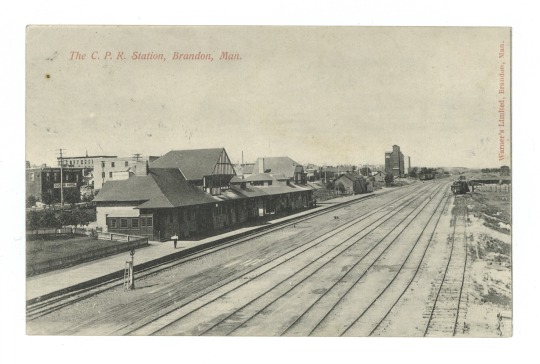
A postcard from 1906 showing the Canadian Pacific Railway station in Brandon, Manitoba. Photo source
Brandon is a true railroad town; it may never have existed without the CPR. The railroad company chose and named the townsite in 1881, electing to run the trans-continental railroad just 3.2km west of the existing settlement of Grand Valley. Today, Brandon is the second-largest city in Manitoba, while Grand Valley is a Historical Site display cairn.
10 notes
·
View notes
Text
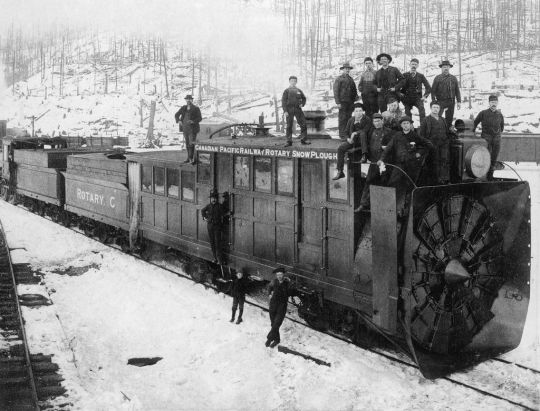
Rotary snow plow at Rogers Pass, Canadian Pacific Railway
77 notes
·
View notes
Text

Canadian Pacific Rail Station, Winnipeg, taken around 1940. The building, which was the fourth railway station on the site, was built between 1904-1906, and enlarged in 1915. It operated as a railway station until 1978. It has the distinction of being the first Beaux-Arts style building in Canada. Since 1992, it’s belonged to the Neeginan Centre, or the Aboriginal Centre of Winnipeg
2 notes
·
View notes
Video
A Train Goes by Mount Bourgeau and Peaks of the Massive Range (Black & White, Banff National Park) by Mark Stevens
Via Flickr:
Along the Bow Valley Parkway.
#Alberta Provincial Highway No. 1A#Banff National Park#Banff-Lake Louise Core Area#Black & White#Blue Skies with Clouds#Bow River#Bow Valley Parkway#Canadian Pacific Railway#Canadian Pacific Railway track#Canadian Rockies#Capture NX2 Edited#Color Efex Pro#Day 2#Evergreens#Hillside#Hillside of Trees#Hillsides#Looking SW#Looking to Continental Divide#Looking to Mountains of the Continental Divide#Massive Range#Meadow#Mount Bourgeau#Mountains#Mountains in Distance#Mountains off in Distance#Muleshoe Picnic Area#Nature#Nikon D800E#Project365
2 notes
·
View notes
Text

"TURNING OUT ONE COMPLETE TRAIN A DAY," Winnipeg Tribune. December 4, 1913. Page 13.
----
Shops at Angus Largest of Their Kind in the Dominion-C.P.R. Building Cars of Steel
----
The Canadian Pacific railway's shops at Angus, in the extreme northeast of Montreal, are the largest of their kind in the Dominion. Here pig iron is turned into monster locomotives with shiny fittings, and when roughhewn logs are not employed made into palace parlor cars. Angus shopmen boast that the plant is capable of turning out a complete train a day. When the entire force is working an army of 6.000 men are employed at the works.
From the boy who deftly catches bucket of red-hot bolts tossed to him from a forge twenty feet away, to the expert engaged in tuning and testing the bells and sirens which are to clangs and whistle in Saskatchewan or Austria, every person at Angus fits into his niche of the intricate organization and there is no confusion and no de-ay.
When the Pennsylvania railroad system completed its tunnel into New York, it made a regulation that no wooden cars were to make use of its lines. This led the railway companies of Canada to construct steel cars, for which the public had been agitating for some time, as they constituted less risk to the tray.... So that now wooden cars are gradually disappearing and will soon be 3 thing of the past.
The decision on the part of the Canadian Pacific to build its cars of steel instead of using wooden bodies, while not exactly a new step in Industrial activity, will probably be taken up on a larger scale than ever before on this continent. The capacity of the new steel shops which have just been completed is ten cars a day, and this department of the works is now running full blast.
Assembling a Steel Car.
When the trucks are delivered from the trucks shop, steel girders, punched for bolts and rivets, are hoisted on cranes and held in position while a workman with a hydraulic drill drives the fasteners into place. The assembling of a steel car is much more speedy than the old method of building wooden coaches, using the trucks as foundation. A large amount of the old equipment which was used in the construction of the wooden cars 14 being reconverted and adapted for the making of the new carriers.
This department of the Angus shops is now in the course of transposition and will be much condensed, as wooden parts required will be much less numerous. The wooden box which forms the exterior of the freight car is fastened outside of the girders and can be replaced on the same car when it wears out.
Comfort and Luxury.
Although the project of making all cars, passenger and freight alike, with steel frames, has been proposed, and is now under serious consideration by the C. P. R., no move has been made at Angus towards installing a steel plant for passenger coaches. The general plan of assembling a passenger car is that used in other train work, the component parts being added to the trucks, which are set in the erecting pits to be built upon.
The finished parlor car is in itself an achievement, for here not only safety and utility are to be considered but comfort and luxury for the passengers.
Coaling Up Real Test of Engine.
Coaling up is the real test of an engine's worth. Parts may have been perfect and preliminary inspection may have found no defect in the whole, but engines are made to run, and if this one will not, back it goes through a long series of tests and examinations to discover where is its weak point. As with ships at their first launching, the constructing engineer who has planned the whole is never certain that his locomotive will run without mishap.
To the east of the Angus shop is a side track where the monster engines are first tried with coal in the bunkers and steam in the boiler.
A little group always gathers around the new engine. Fires have been laid, the smoke pours through the exhaust pipe and the fireman gives a preliminary tug at the bell rope Then the grisled engineer, who is the only one who does not appear excited. throws open a throttle, opens the siren into hideous shriek, and the leviathan chugs along the track, as if this were no new feat and it had been chugging along tracks for years.
The little group of foremen and inspectors give a weak hurrah, as they have done for hundreds of new locomotives since the first was turned out In a few minutes the big engine has steamed backwards into its place at the end of the erecting pits, and stands all ready to go on the "main line."
#montreal#angus shops#usines angus#railway workers#canadian pacific railway#locomotive works#factory workers#capitalism in canada#railway capitalism#railway construction#boxcars#passenger train
2 notes
·
View notes
Text
Horrific: The Empress of Ireland Wreck 1914 | Documentary
youtube
#history#1910s#1914#empress of ireland#rms empress of ireland#ocean liners#canadian pacific railway#ships#wreck#shipwrecks#oceanliner designs#documentary#Youtube#maritime history
8 notes
·
View notes
Text

Storm clouds brew over an iconic prairie landscape in Bulyea, Sask
#Saskatchewan#The Prairies#storm clouds#Western Canada#grain elevators#rural landscape#rural aesthetic#CNR#CPR#Canadian Pacific Railway#big sky country#weather#iconic
48 notes
·
View notes
Text
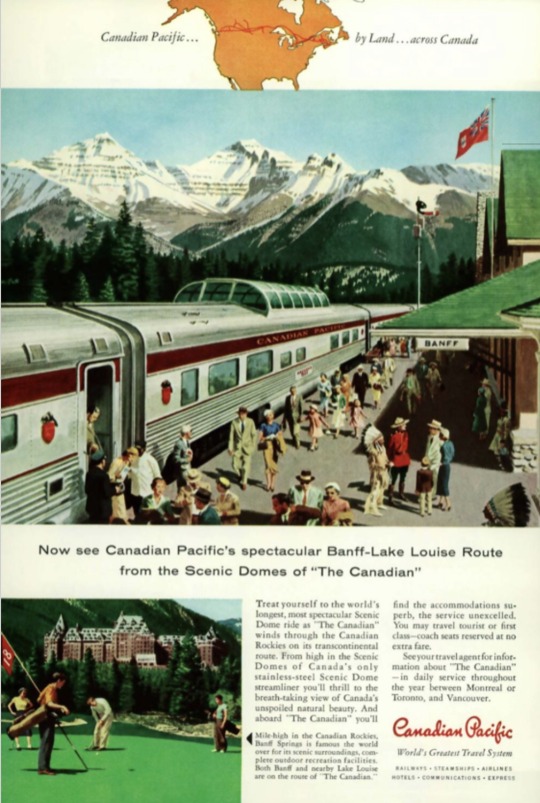
1958 Canadian Pacific Railroad ad
#1958#50s ads#1950s ad#canadian pacific railway#railroad#train#travel#vacation#golden age#vintageadsmakemehappy#vintage magazine#vintage advertising#magazine#advertising#1950s#50s
36 notes
·
View notes
Text
Canadian Pacific Railway Ltd. and Unifor have reached a tentative collective agreement Friday afternoon for 1,200 workers who are responsible for maintaining rail cars and locomotives.
Negotiations have been ongoing since September and were set to expire on Dec. 31, 2022.
“These negotiations encountered several difficult periods and the bargaining committee worked very hard to achieve a tentative to bring back to the membership,” said Rick Raso, president of Unifor Local 101R.
Unifor said it will provide members with information in the coming days on ratification meetings, which will be held at multiple locations across the country. [...]
Continue Reading.
Tagging: @politicsofcanada
35 notes
·
View notes
Text

CPR demonstration farm house. This one was built in 1912. The Canadian Pacific Railway built these demonstration farms like they were little ikea show rooms. Their target audience were settlers needed to populate the prairies along the railway. The building were sold in these build your own farm kits. When the local area was sufficiently populated the demo farms were decommissioned and usually sold off in parts (at the used homesteads store I guess). This particular example may be the only one standing as built by the railway.
Summer 2022
#CPR#canadian pacific railway#demonstration farm#abandoned#homestead#farm in a box#ikea hacks#local history#alberta#canada#photography
13 notes
·
View notes
Photo




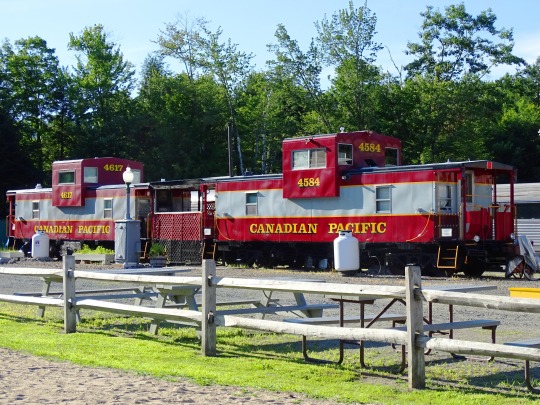


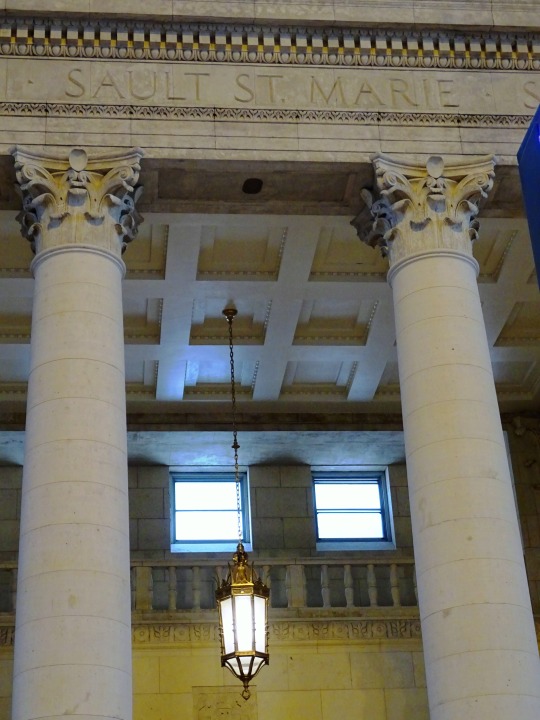


The Canadian Pacific Railway was incorporated by Act of Parliament at Ottawa (44th Vic., c.1) on February 16, 1881.
#Canadian Pacific Railway#incorporated#16 February 1881#anniversary#RPC#Windsor Station#Montréal#Québec#summer 2018#Canadian history#Canada#original photography#architecture#cityscape#tourist attraction#landmark#Toronto#Ontario#logo#Gare du Palais by Harry Edward Prindle#Quebec City#Union Station#Toronto Railway Museum#Craigellachie Last Spike#British Columbia#Moose Jaw#Saskatchewan#Lincoln City#New Hamphire#USA
2 notes
·
View notes
